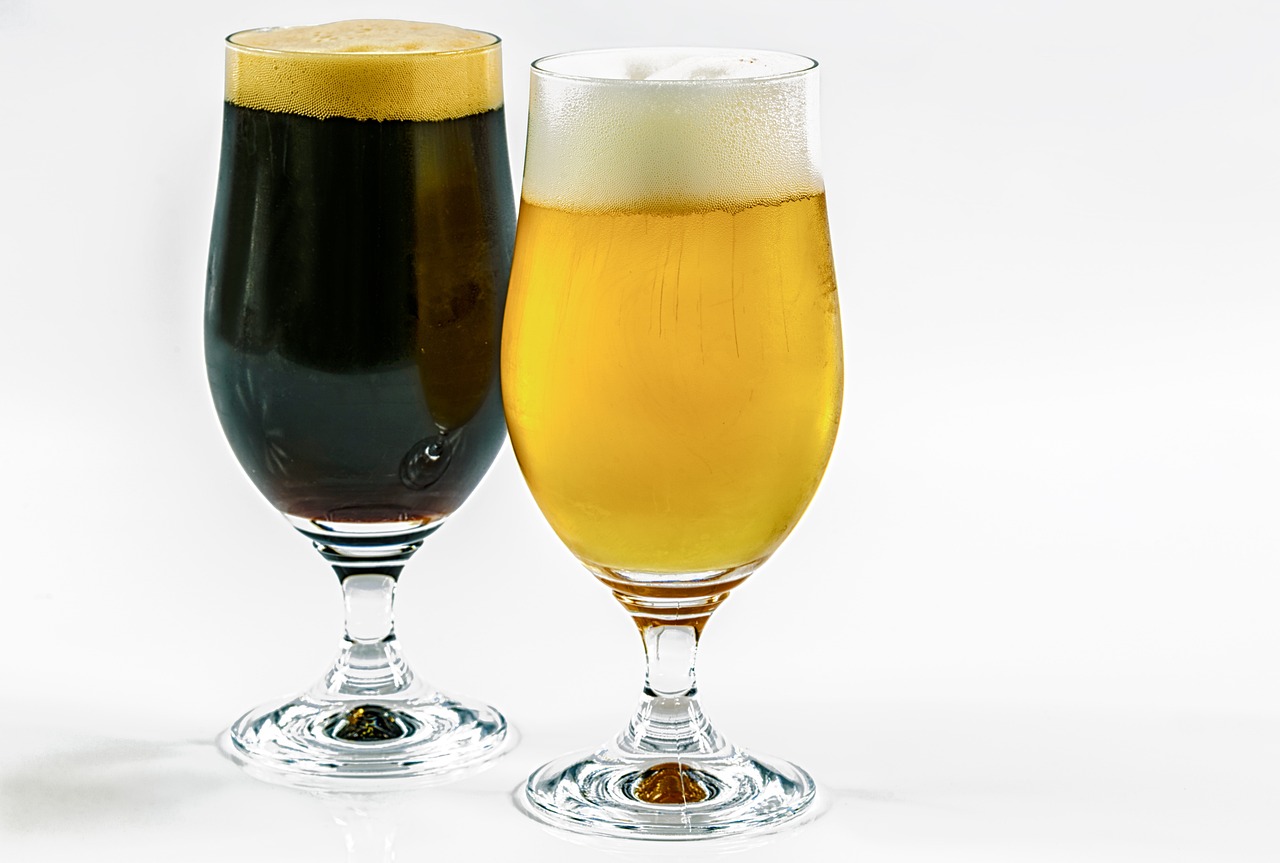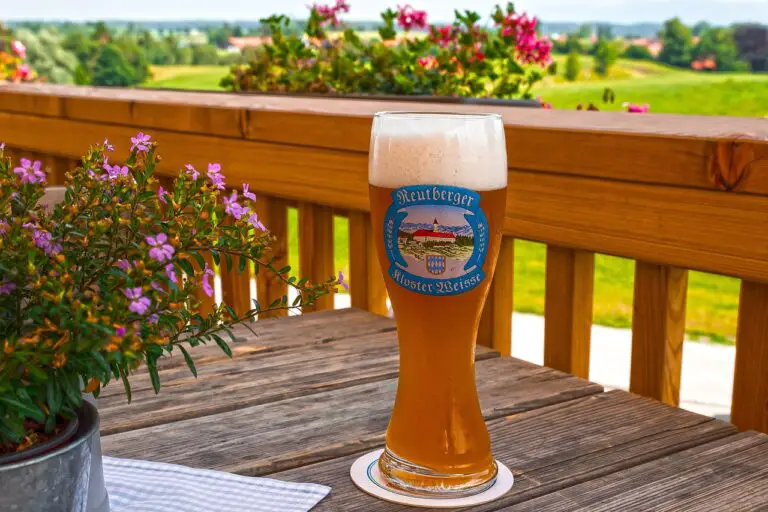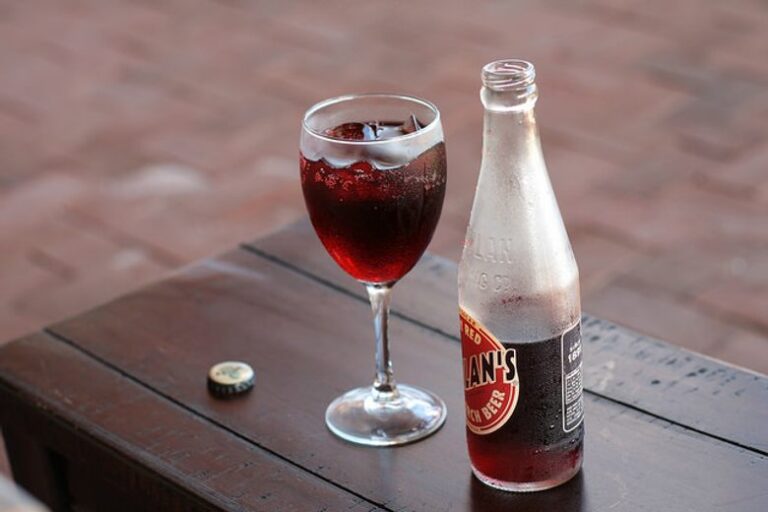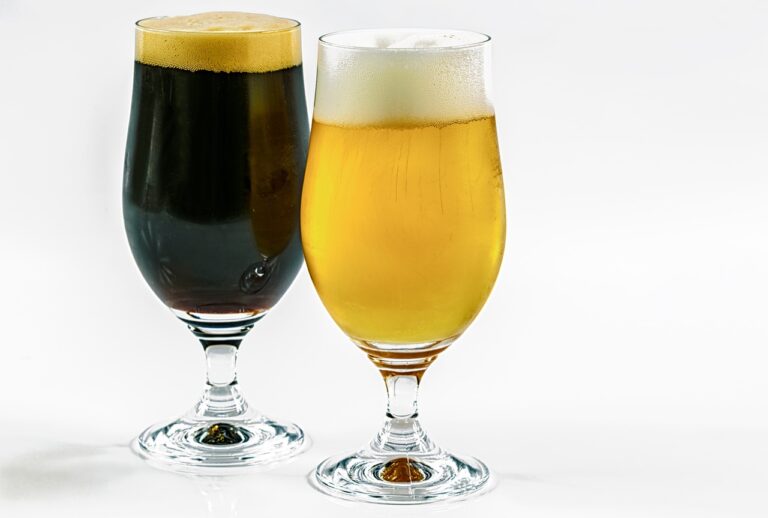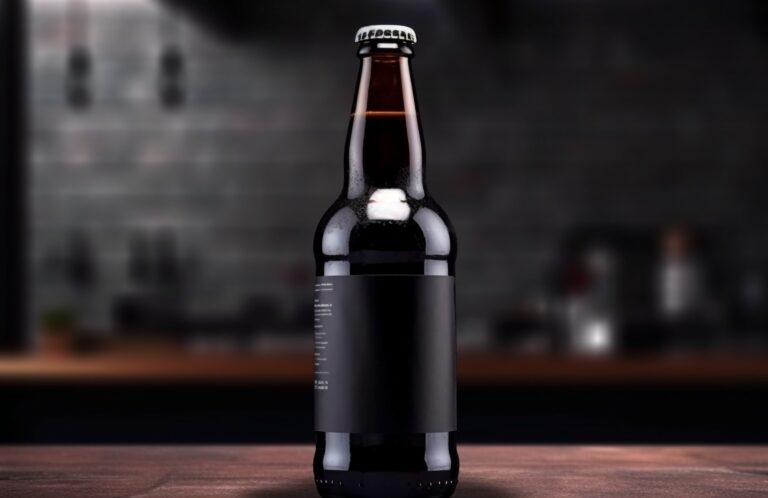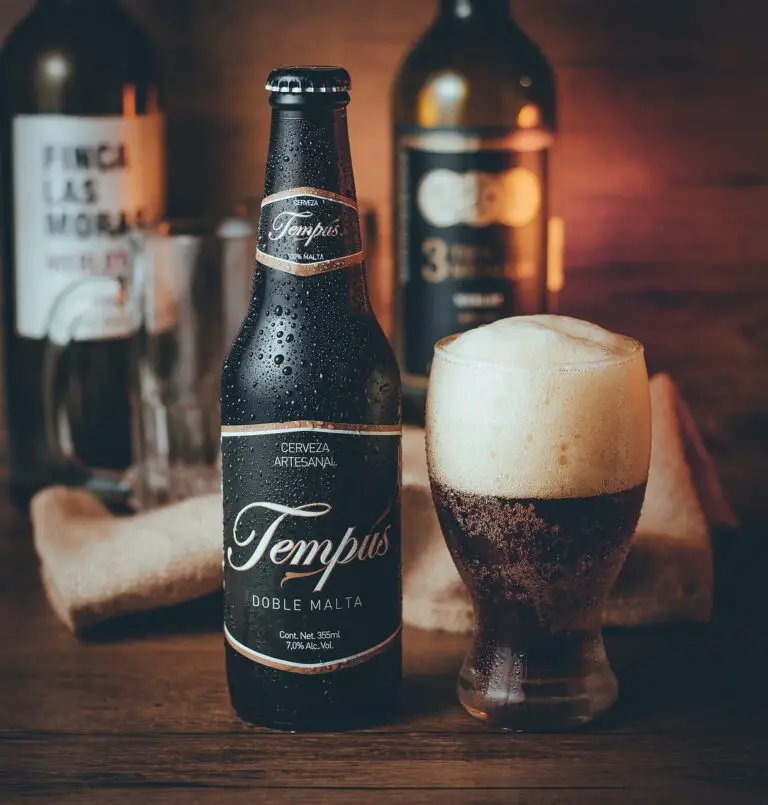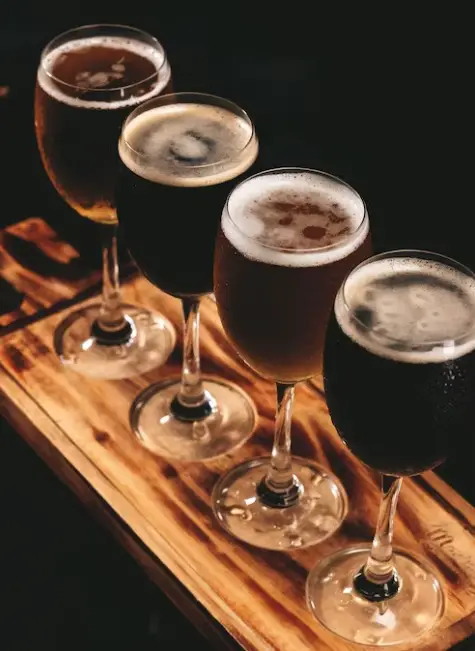Which Beer Is The Darkest?
Dark beers are a captivating side of the beer world, known for their rich, deep hues and complex flavors. These brews stand apart from their lighter counterparts, offering a sensory experience that intrigues many. But what are dark beers, what makes them unique, and how can we understand their color?
In this article, we’ll explore the world of dark beers, uncovering the factors that set them apart and shedding light on what makes them so intriguing. We’ll also discuss the significance of beer color and how it plays a crucial role in our perception of these distinctive brews. Whether you’re a seasoned beer enthusiast or a newcomer to the craft beer scene, join us as we dive into the depths of dark beers.
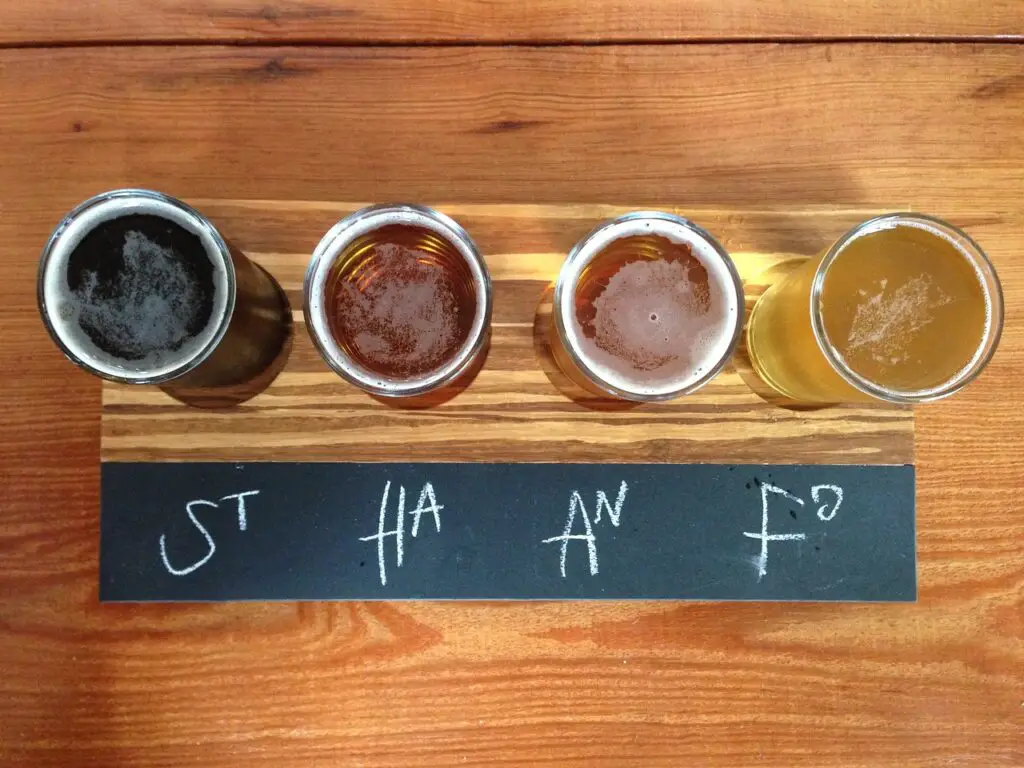
So, Which Beer Is The Darkest?
Determining the absolute darkest beer is tricky, as it depends on various factors, such as the type of malt used, the brewing process, and the beer’s specific style. However, some styles of beer are generally considered among the darkest:
- Imperial Stout: This style often boasts an opaque black color with a vibrant and thick body. Beers like “Dark Lord” from Three Floyds Brewing Company and “Ten FIDY” from Oskar Blues Brewery are examples of extremely dark imperial stouts.
- Russian Imperial Stout: Similar to imperial stouts, Russian imperial stouts are renowned for their deep black hue and intense flavors. “Old Rasputin” by North Coast Brewing Company is a classic example.
- Foreign Extra Stout: These stouts are known for their robust darkness and are often stronger in alcohol content. “Guinness Foreign Extra Stout” is a well-known example.
- Baltic Porter: While not as well-known as some other styles, Baltic porters can also be quite dark and exhibit a range of complex flavors. “Baltika 6” by Baltika Breweries is an example.
- American Black Ale (Black IPA): Though not as opaque as stouts or porters, these beers can have a dark, almost black appearance. “Sublimely Self-Righteous Ale” from Stone Brewing is a notable example.
It’s worth noting that the darkness of a beer is often measured using the Standard Reference Method (SRM) scale, where higher numbers indicate darker beers. Beers in the range of 40-100+ SRM are typically considered very dark.

Why Are Some Beers Lighter While Others Are Harder?
The Color Of Beer Explained
Beer color is primarily determined by two main factors: the type of malt used and the brewing process employed. These factors are crucial in shaping a beer’s appearance and contribute significantly to its overall character.
1. Type of Malt:
- Base Malts: The choice of base malt, such as two-row or six-row barley, sets the foundation for a beer’s color. Two-row barley produces lighter-colored beers, while six-row barley can contribute to a deeper hue.
- Specialty Malts: Specialty malts come in various forms, including caramel, crystal, and chocolate malts. They are kilned or roasted to different degrees, which affects their color and flavor contributions. For example:
- Caramel Malts: These malts are responsible for the rich amber and red tones in beers. They add sweetness, caramel, and toffee notes.
- Chocolate Malts: Chocolate malts provide dark brown to black colors and contribute flavors of chocolate and coffee.
- Roasted Barley: Highly roasted barley imparts a black color and roasted coffee or bitter chocolate flavors.
2. Impact of Roasted Grains and Malts:
- The degree of roasting directly influences the color of the malt and, consequently, the beer. Lightly roasted malts produce pale beers, while heavily roasted malts yield darker colors.
- The choice and combination of roasted grains and malts allow brewers to craft various colors and flavors in their beers. For instance, a stout may use a substantial amount of roasted barley to achieve a pitch-black appearance.
3. Brewing Process:
- Mash Temperature: The temperature at which grains are mashed plays a role in beer color. Higher mash temperatures can lead to more unfermentable sugars and a fuller body, resulting in darker beers.
- Boil Time: A longer boil can lead to the caramelization of sugars, darkening the wort. This effect is particularly noticeable in Belgian Dubbels and Tripels.
- Adjuncts and Additions: Ingredients like molasses, dark sugars, or fruits can influence both color and flavor. For example, strong Belgian ales often incorporate candi syrup to enhance color and flavor complexity.
In summary, beer color is a complex interplay of malt selection, roasting levels, and the brewing process. Brewers carefully choose these elements to achieve a particular beer style’s desired appearance and flavor profile. By understanding these factors, beer enthusiasts can appreciate the artistry behind the colors in their favorite brews and discover the wide range of possibilities that the world of beer offers.
Which Are The Most Popular Dark Beers?
Here are the most popular dark beers you should try out:
1. Porter:
- Description: Porter is a dark and robust beer known for its deep brown to black color. It often exhibits a balance of roasted malt flavors, coffee notes, and hints of chocolate. It can vary in alcohol content and body, with variations like Baltic Porter and American Porter.
- History: Porter’s origins date back to 18th-century London, where it was a favorite among the working class. It is said to have been named for the porters who enjoyed it. The style later evolved into various subtypes, including stout.
2. Stout:
- Description: Stout is characterized by its dark color and rich, full-bodied flavor profile. Varieties like Dry Stout (e.g., Guinness), Sweet Stout (e.g., Left Hand Milk Stout), and Imperial Stout (e.g., Founders KBS) offer a wide range of tastes, from dry and roasted to sweet and chocolaty.
- History: Stout also has its roots in 18th-century London. It was originally marketed as a stronger version of Porter, and over time, various substyles emerged, each with distinct characteristics.
3. Dunkel:
- Description: Dunkel, which means “dark” in German, is a dark lager with a deep amber to brown color. It offers a malty sweetness with toasty and caramel notes, balanced by a clean and crisp finish.
- History: Dunkel is a traditional German beer style enjoyed for centuries. It’s often associated with Munich and Bavaria, where it remains a popular choice among beer drinkers.
4. Schwarzbier:
- Description: Schwarzbier, meaning “black beer” in German, is a dark lager with a surprisingly light and smooth body that defies its appearance. It offers mild roastiness and a clean, refreshing taste.
- History: Schwarzbier has its roots in Germany, particularly in the region of Thuringia. It’s a testament to the diversity of German beer styles, providing a dark alternative to the more well-known pale lagers.
5. Belgian Dubbel:
- Description: Belgian Dubbel is a dark, strong ale with a rich, malty sweetness and hints of dark fruit, spice, and caramel. It often has a moderate alcohol content.
- History: Dubbel is a style that emerged from Belgian monastic brewing traditions. It was initially brewed by Trappist monks, particularly those at the Westmalle Abbey. Today, it’s a popular choice among Belgian beer enthusiasts.
6. Scotch Ale/Wee Heavy:
- Description: Scotch Ale, or Wee Heavy, is a strong and malty ale with caramel and toffee flavors. It can range from amber to deep brown in color.
- History: This style has Scottish origins and is known for its hearty and robust character. It was traditionally brewed for festive occasions in Scotland.
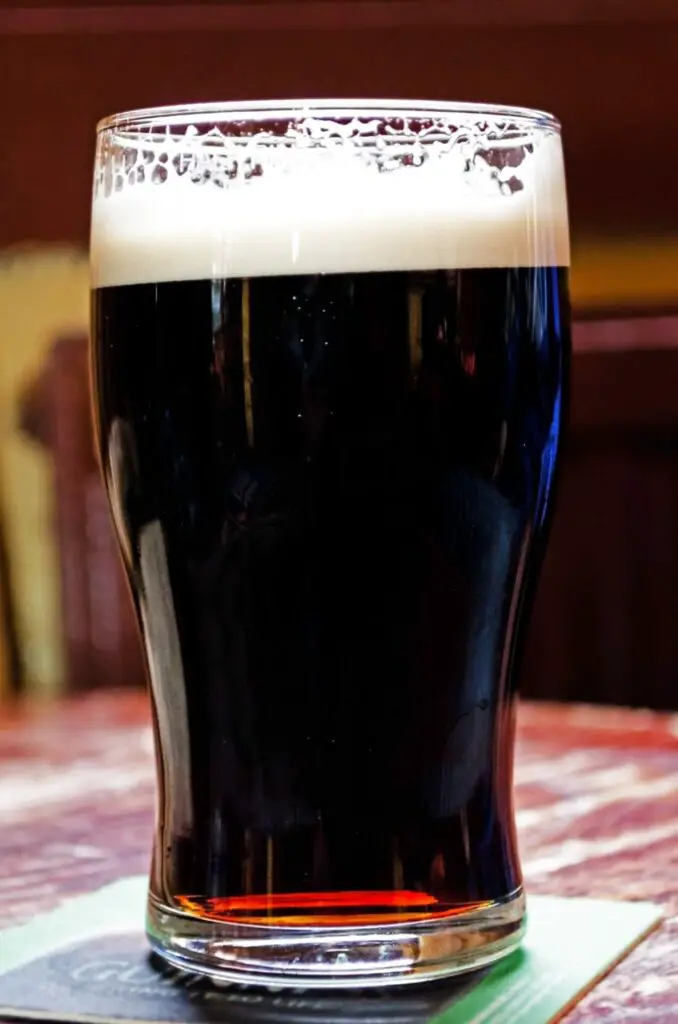
What Makes Dark Beers Special?
Dark beers are celebrated for their delicate and varied flavor profiles, offering a sensory journey that captivates the palate. Here’s a closer look at some of the prominent flavor and aroma components in dark beers:
1. Roasty Notes:
- Description: Dark beers often feature roasted malt or grains that impart flavors reminiscent of toasted bread, biscuits, and charred wood. Depending on the beer style, these roasty notes can range from subtle to pronounced.
- Example: In stouts and porters, roasted malt provides a prominent roasty character akin to dark chocolate or coffee beans.
2. Chocolate Notes:
- Description: Dark chocolate is a common flavor descriptor in many dark beers. It contributes a bittersweet, cocoa-like taste that can range from mild to intense, often intermingling with other flavor elements.
- Example: Milk stouts often exhibit a creamy, milk chocolate-like quality, while imperial stouts can showcase rich, dark chocolate flavors.
3. Caramel and Toffee:
- Description: Caramel and toffee notes arise from the caramelization of sugars during the malting process. These flavors add sweetness and a pleasant, sticky mouthfeel to the beer.
- Example: Scotch ales and Belgian dubbels are known for their pronounced caramel and toffee characteristics.
4. Coffee Undertones:
- Description: Dark beers frequently feature coffee-like undertones, ranging from mild to bold. These coffee notes can evoke freshly brewed coffee or espresso, adding complexity to the beer’s flavor profile.
- Example: Many porters and some stouts, especially those with coffee additions, showcase distinct coffee flavors.
5. Dark Fruit and Spice:
- Description: Some dark beers incorporate dark fruit flavors such as raisins, plums, or figs, as well as subtle spiciness. These elements contribute to a beer’s complexity and may be more prominent in Belgian-style dark ales.
- Example: Belgian dubbels often display a rich blend of dark fruit, spice, and malt sweetness.
6. Nutty and Biscuity Tones:
- Description: Nutty and biscuity notes can be found in certain dark beers, adding a layer of complexity. These flavors are often subtle and complement the beer’s maltiness.
- Example: Brown ales, both English and American styles, can exhibit nutty and biscuity characteristics.
7. Smoky and Earthy Undertones:
- Description: Smoky or earthy nuances may emerge in some dark beers, especially those with roasted barley or smoked malts. These flavors can evoke campfire smoke or earthy woodiness.
- Example: Smoked porters and certain German ranchers are known for their smoky profiles.
Wrapping It Up
In the world of beer, darkness is not merely a shade; it’s a spectrum that spans from deep amber to obsidian black. While pinpointing the absolute darkest beer may remain subjective, the richness of dark beers’ flavors, the intricate interplay of malt and brewing techniques, and the history behind styles like porter, stout, dunkel, and schwarzbier collectively celebrate the captivating allure of the dark side of beer. Whether you’re drawn to the roasted notes of a stout, the malty sweetness of a dunkel, or the surprises within other dark beer styles, exploring the world of dark beers unveils a captivating journey into a realm where color and flavor converge in exquisite harmony.

I am a young architect with a passion that goes beyond blueprints… it’s beer! undertherosebrewing.com is more than just a blog, it’s a manifestation of my lifelong dream to explore, read, and learn everything about beer. Join the blog on this unfiltered and genuine adventure into the heart of beer culture. Cheers!
